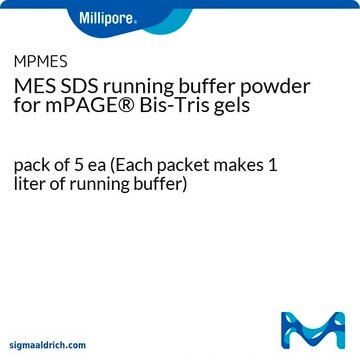P3532
Phenol Red
Bioreagent, Powder
Synonyme(s) :
Phenolsulfonphthalein
About This Item
Produits recommandés
product name
Phenol Red, powder, BioReagent, suitable for cell culture
Gamme de produits
BioReagent
Niveau de qualité
Forme
powder
Technique(s)
cell culture | mammalian: suitable
Couleur
dark red to dark brown
visual transition interval
6.8-8.2, yellow to red
Pf
>300 °C
Solubilité
1 M NaOH: 1 mg/mL
Application(s)
diagnostic assay manufacturing
Température de stockage
room temp
Chaîne SMILES
Oc1ccc(cc1)C2(OS(=O)(=O)c3ccccc23)c4ccc(O)cc4
InChI
1S/C19H14O5S/c20-15-9-5-13(6-10-15)19(14-7-11-16(21)12-8-14)17-3-1-2-4-18(17)25(22,23)24-19/h1-12,20-21H
Clé InChI
BELBBZDIHDAJOR-UHFFFAOYSA-N
Vous recherchez des produits similaires ? Visite Guide de comparaison des produits
Catégories apparentées
Description générale
Application
Mention d'avertissement
Warning
Mentions de danger
Conseils de prudence
Classification des risques
Skin Irrit. 2 - STOT SE 3
Organes cibles
Respiratory system
Code de la classe de stockage
11 - Combustible Solids
Classe de danger pour l'eau (WGK)
WGK 3
Point d'éclair (°F)
Not applicable
Point d'éclair (°C)
Not applicable
Équipement de protection individuelle
dust mask type N95 (US), Eyeshields, Gloves
Choose from one of the most recent versions:
Certificats d'analyse (COA)
Don't see the Right Version?
If you require a particular version, you can look up a specific certificate by the Lot or Batch number.
Déjà en possession de ce produit ?
Retrouvez la documentation relative aux produits que vous avez récemment achetés dans la Bibliothèque de documents.
Les clients ont également consulté
Notre équipe de scientifiques dispose d'une expérience dans tous les secteurs de la recherche, notamment en sciences de la vie, science des matériaux, synthèse chimique, chromatographie, analyse et dans de nombreux autres domaines..
Contacter notre Service technique







